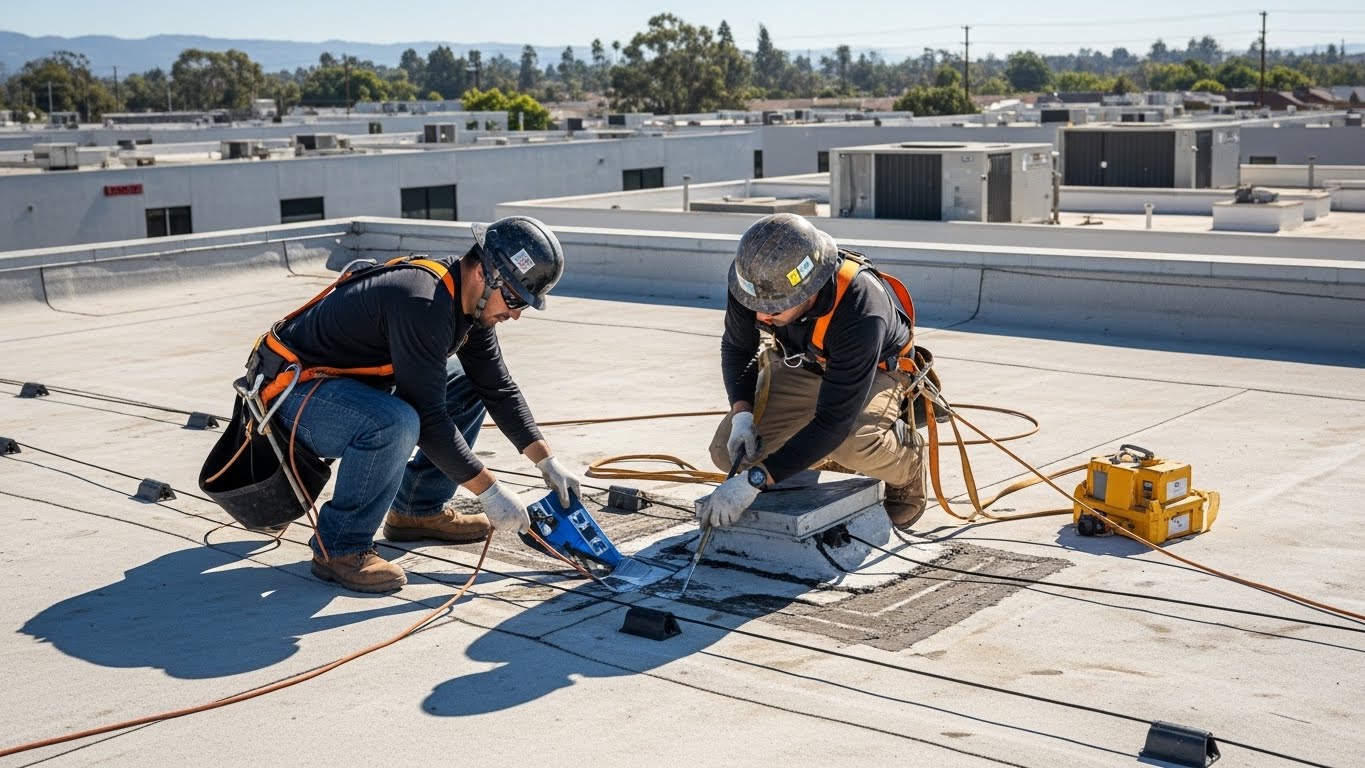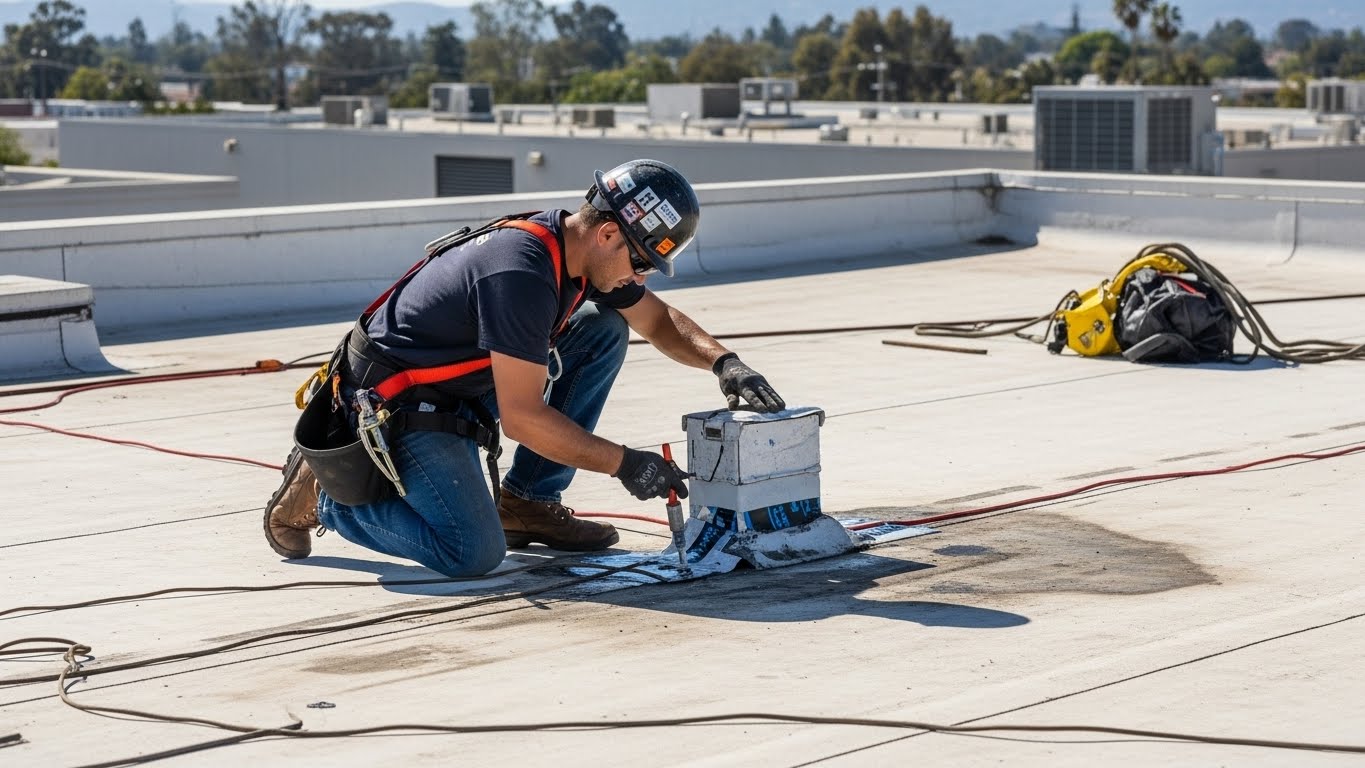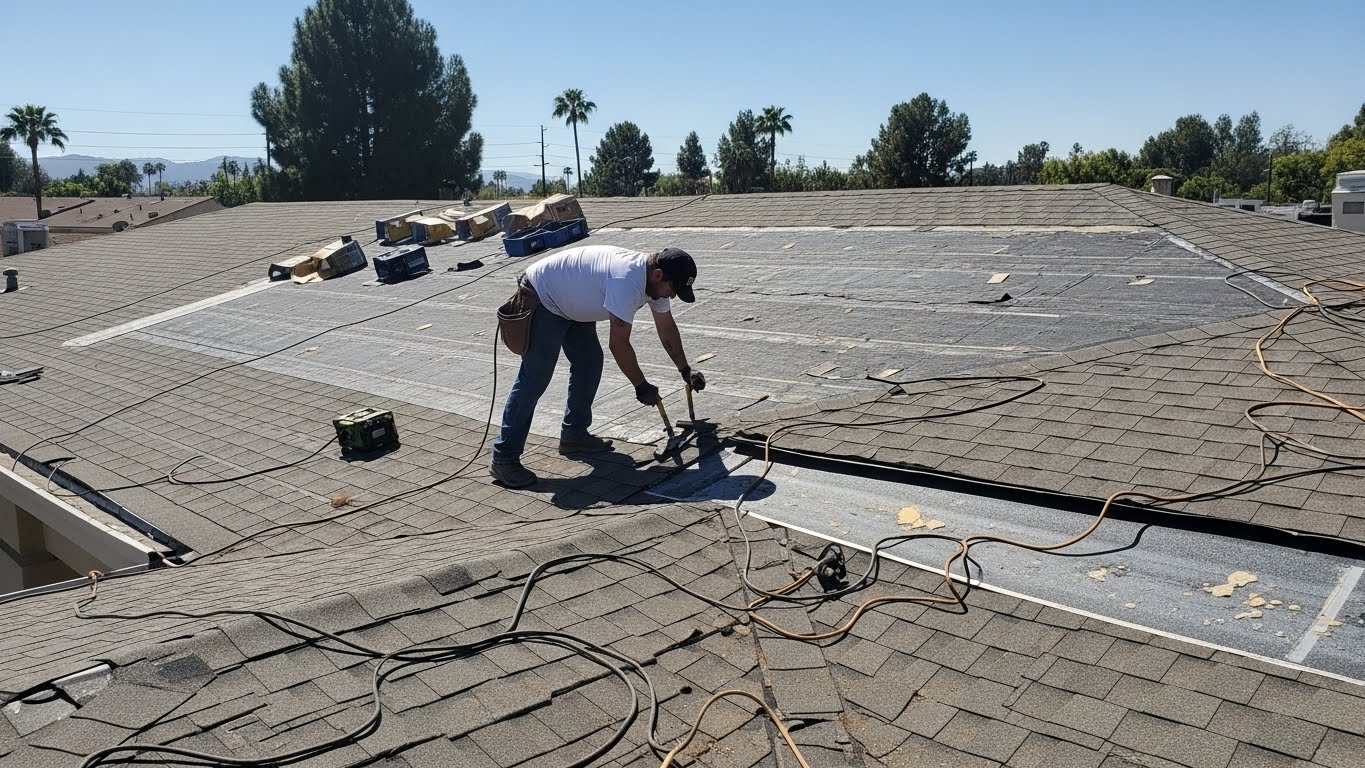Metal roofs and Tarzana’s heat have a complicated relationship. On summer afternoons, sunlit panels can sizzle, expanding with the day’s warmth before cooling quickly after sunset. Over years, that cycle of expansion and contraction asks a lot of seams, fasteners, and flashings. The good news is that metal roofs, especially standing seam systems, are built to move and, when maintained, can last decades. The challenge shows up when small details are overlooked or patched with materials that can’t flex the way metal does. That’s where a precise, locally informed approach makes all the difference. If your metal roof has started to pop, drip around a vent, or show rust near screws, our team can bring it back to form with targeted roof repair designed for valley heat and the occasional blast of Santa Ana winds.
Tarzana sees big daily temperature swings, and metal feels those swings more than most materials. On through-fastened panels, this movement can back screws out by fractions of an inch, flattening gaskets and creating tiny openings that wind-driven rain will find. On standing seam assemblies, movement concentrates at clip points and in longitudinal seams, testing the integrity of sealant beads and factory hems. Penetrations—like plumbing vents, skylight curbs, and solar mounts—introduce dissimilar materials and angles, adding another level of complexity. A durable repair strategy respects this movement rather than trying to glue it into submission.
The first step is assessment. We walk the roof to identify patterns rather than isolated spots. If fasteners are backing out across an entire slope, the solution is different from a single problem area at a roof-to-wall transition. We measure panel spans, note seam types, and check for oil canning or subtle deformation that can reveal hidden stresses. At penetrations, we look for cracked rubber boots, hard sealants that have lost elasticity, and metal flashing that has separated from curbs. If rust is present, we evaluate whether it’s surface oxidation that can be treated or a deeper issue that requires panel or flashing replacement.
Fastener issues on through-fastened roofs respond well to systematic work. We replace compromised screws with slightly larger, corrosion-resistant fasteners with high-quality washers, and we follow a consistent pattern so panels seat evenly. Where the substrate has lost grip, we install new fasteners into solid structure and, when appropriate, add stitch screws along laps to tighten the assembly. We avoid “gooping” over screw lines because sealant films tend to crack under heat—what works is restoring proper mechanical compression and water shed.
On standing seam roofs, the craft shifts to the seams themselves and to transitions. We inspect for open vertical seams, loose clips, and end-lap joints that need renewal. For details at walls, we ensure Z-closures and foam closures are in place and not degraded, then install new closures where needed to block wind-driven rain. At skylight or curb interfaces, we rebuild the pan and head flashings with attention to hemmed edges and correct shingle-style overlap. We use sealants rated for high movement and UV exposure, applying them as a secondary defense, not the primary waterproofing.
Rust management is straightforward when addressed early. We wire-brush and treat light oxidation, prime with compatible coatings, and finish with paints or systems that match the roof’s chemistry. If rust has caused pitting or thinning near fasteners, we replace the affected panel or accessory so the fix isn’t just cosmetic. In Tarzana’s dry climate, surface rust tends to advance slowly, which is why timely, periodic attention pays off with long service life.
Coatings can play a role, but only when the foundation is sound. An elastomeric or silicone coating over a metal roof can bridge small gaps and reflect heat, lowering roof temperatures on hot days. Before we consider a coating, we tighten fasteners, renew flashings, and replace any compromised sealants. Coatings are then applied to a clean, prepared surface at the right thickness, with special reinforcement at seams, screws, and penetrations. Done right, this approach adds flexibility and helps the roof ride out the heat cycles with less stress.
Metal roofs also interact with other building systems in ways that influence leaks. HVAC contractors, solar installers, and satellite technicians routinely access rooftops, sometimes without knowing which panels can be stepped on and which scribe lines should be avoided. We often see scuffs, flattened ribs, or misaligned snow guards—less common here but still present—that open pathways for water. Part of a lasting repair is reorganizing the roof as a work surface, adding walk pads where traffic is unavoidable and labeling areas to prevent future missteps.
Wind matters, too. When Santa Anas push across the valley, uplift forces probe at end laps and perimeters. We beef up these edges with additional mechanical fastening where allowed, renew sealant beads that serve as secondary defenses, and confirm that closures at rake edges are intact. The goal is not just to stop today’s leak, but to quiet the roof so it rides out the next wind event without new rattles or openings.
Consider a recent project on a low-slope standing seam roof over a warehouse off the 101. The owner reported a leak near a wall only during windy rain. We found that the Z-closure beneath counterflashing had degraded and a foam closure was missing entirely, leaving a narrow channel where water could blow up and over the seam. We replaced the closures, refit the counterflashing with a clean reglet, and added a small cricket to steer water away from the vulnerable corner. The next storm came and went without a drop inside.
In another case, a hillside home with a through-fastened roof was collecting water at screw lines after hot days. Thermal movement had loosened dozens of screws, and old gaskets were flattened. We methodically replaced fasteners with upgraded versions, corrected panel alignment, and treated light oxidation. The homeowner noticed two immediate changes: no more drip after dusk and a quieter roof at night as expansion noises diminished.
Preventive maintenance on metal is simple but potent. A roof walk in spring and fall to tighten a handful of fasteners, clear debris from gutters, and refresh a few sealant beads can prevent the escalation that leads to leaks. Because metal amplifies small problems, early intervention pays for itself in avoided downtime and interior repairs. We document these visits with photos, so you can see exactly what changed and what stayed solid from season to season.
The bigger question we’re often asked is whether a leaking metal roof has reached the end of its life. Usually, the answer is no. Most leaks come from details, not from the panels themselves. By addressing those details with materials that match the roof’s movement and with an eye toward heat resilience, we restore performance and extend service life significantly. Replacement becomes a thoughtful choice, not a forced reaction to a surprise storm.
Why does my metal roof leak only on hot days or after sunset?
Thermal expansion and contraction can open tiny gaps around fasteners or at seams. When temperatures drop quickly after a hot day, condensation can form and find those gaps, showing up as drips. Tightening or replacing fasteners, renewing closures, and improving detail work typically solves the problem.
Can you walk on my metal roof without damaging it?
Yes, with the right technique. We step on the flats or at structural support points, avoid rib peaks where they are not designed for load, and use soft-soled shoes. When traffic is expected regularly, we add walk pads to protect the surface.
Will a coating stop metal roof leaks?
Coatings can help when the roof is fundamentally sound. They are not a cure-all for loose fasteners or missing closures. We always correct mechanical issues first, then apply coatings to enhance reflectivity and flexibility where appropriate.
What about rust near screws?
Light surface rust can be treated and sealed effectively. If corrosion has thinned the metal or compromised fastening points, we replace affected panels or components to ensure the repair isn’t just cosmetic.
How often should a metal roof be serviced in Tarzana?
Twice-yearly checks in spring and fall are ideal. The visits are quick, and they catch movement-related issues before they turn into leaks during windy rain or after heat-driven expansion cycles.
If you are noticing drips, tapping noises, or rust blooms and want a solution that respects how metal behaves in Tarzana’s heat, we are ready to help. From fastener upgrades to seam renewal and selective coating, our approach is precise and durable. Reach out to schedule an assessment and put your roof on a maintenance path that keeps it quiet and dry. For prompt attention and a plan tailored to your roof, book professional roof repair today and let’s restore confidence in your metal roof.






